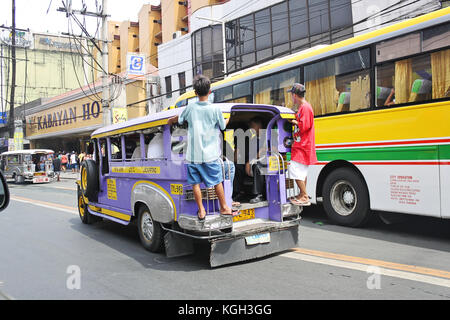Discovering the Effect and Efficiency of Transit Advertising And Marketing in Urban Advertising Strategies
Transit advertising and marketing has come to be a significant part of metropolitan marketing approaches, maximizing the one-of-a-kind characteristics of mass transit settings. Its capability to get to a wide and varied audience offers brands with an opportunity to produce purposeful links via constant presence. Nonetheless, with the rapid evolution of innovation and changing customer behaviors, the landscape of transportation marketing is undergoing remarkable modifications that merit closer assessment. What effects do these trends hold for online marketers looking for to harness the full possibility of this tool?
The Surge of Transit Advertising
As city populations continue to swell, the demand for innovative marketing options has actually resulted in the increase of transit marketing as an essential component of city advertising and marketing strategies. This type of advertising and marketing leverages public transport systems-- such as buses, trains, and trains-- to reach a diverse audience in largely inhabited locations. The efficiency of transportation advertising and marketing depends on its ability to engage consumers throughout their daily commutes, an often neglected yet vital time for brand name messaging.
With cities ending up being significantly busy, traditional advertising rooms are ending up being scarce and less reliable. Transportation advertising supplies a dynamic option, allowing brands to showcase their messages in high-traffic areas where potential clients are continually revealed to the advertisements. Additionally, as urban locals increasingly depend on mass transit, the importance and presence of transportation advertising and marketing have actually grown dramatically.
Furthermore, technical innovations have improved the class of transit advertising and marketing, permitting for electronic display screens and interactive campaigns that can record customer attention much more efficiently than static advertisements. Consequently, transportation advertising and marketing is not just an economical option however likewise an important strategy for brands seeking to attach with urban consumers in a unforgettable and impactful fashion.
Trick Benefits of Transit Marketing
The performance of transportation advertising and marketing is emphasized by its multifaceted benefits, making it a vital device for city marketing professionals. Among the key benefits is its comprehensive reach; transportation systems offer countless travelers daily, allowing brand names to connect with a diverse audience in high-traffic atmospheres. This presence enhances brand name awareness, making certain that ads are seen continuously by commuters.

Additionally, transportation advertising and marketing is cost-efficient compared to other media, providing a lower expense per impact while preserving high visibility. The versatility of ad styles, from bus covers to digital display screens, permits impactful and imaginative campaigns that can adjust to changing market requirements.
Customer Behavior Insights
A considerable portion of consumer habits is influenced by the pervasive nature of transit advertising and marketing in urban atmospheres. This type of advertising catches the interest of diverse demographics, involving consumers during their everyday commutes. As individuals browse busy cityscapes, they come across transit ads in different styles, consisting of bus wraps, metro posters, and electronic screens. The strategic positioning of these ads maximizes presence, thus boosting brand recall.
Research suggests that transportation advertising can stimulate psychological feedbacks, resulting in raised brand affinity. Consumers frequently associate the experience of commuting with particular brands, producing an enduring perception that affects investing in decisions. Moreover, the regularity of exposure to transit advertisements cultivates familiarity, which is a critical consider customer depend on and loyalty.

Moreover, the common element of public transport adds to this phenomenon; as people share spaces, they are more likely to discuss and recommend brands they encounter. Hence, transit advertising not just reaches consumers but also boosts social communications that strengthen brand name messaging. Comprehending these behavioral understandings allows marketers to tailor their approaches efficiently, making certain that their campaigns resonate with target market in the metropolitan landscape.
Study and Success Stories
Successful execution of transportation advertising and marketing approaches is exemplified through numerous study that highlight its efficiency in city advertising. One remarkable example is the cooperation in between a preferred drink business and a significant city's public transit system. The project made use of bus covers and interior posters, resulting in a 30% boost in brand recognition and a 15% rise in sales within the target group over 3 months.
Another effective instance reference involved a neighborhood dining establishment chain that employed train terminal advertising to attract travelers. By producing aesthetically striking ads that used timed promos, the dining establishment experienced an uptick in foot web traffic, with an outstanding 25% rise in lunch hour patrons.
Additionally, a city's tourist board introduced a transportation project showcasing regional destinations with bus quit display screens and train ads. The campaign resulted in a considerable boost in traveler visits, as reported by a 40% increase in questions at visitor facilities.
These study highlight the versatility and possibility of transportation marketing to involve city target markets successfully, showing that critical placements can produce substantial returns on investment and improve brand presence in busy metropolitan atmospheres. - Transit Advertising Philippines
Future Trends in Transportation Marketing
As urban landscapes continue to advance, so as well does the world of transportation advertising, which is poised to welcome cutting-edge modern technologies and methods. One significant pattern is original site the combination of electronic advertising and marketing screens into public transit systems. These vibrant display screens enable for real-time updates and targeted material, improving target market interaction. Additionally, the adoption of programmatic advertising and marketing is expected to obtain energy, making it possible for advertisers to leverage information analytics for more specific target market targeting based upon time, location, and market understandings.
One more arising trend is making use of augmented reality (AR) and digital truth (VR) experiences within transit advertising. These immersive technologies can captivate commuters, changing mundane journeys right into interactive brand experiences. Additionally, sustainability is coming to be increasingly vital; environmentally friendly advertising and marketing materials and methods are likely to gain grip, showing the growing customer demand for corporate social responsibility.
Lastly, the surge of mobile connectivity will promote higher assimilation between transit advertising and marketing and individual devices. Advertisers can produce smooth cross-channel experiences, enabling instant communication and engagement with possible customers. Collectively, these fads suggest a Read Full Article transformative future for transit advertising and marketing, offering new opportunities for brand names to get in touch with metropolitan audiences.
Final Thought
Transportation advertising has actually developed itself as a significant part of city advertising methods, showing substantial performance via improved brand exposure and customer engagement. The ability to adapt messages to certain demographics, combined with the cutting-edge usage of innovation, settings transit advertising as a driving pressure in modern marketing (Transit Advertising Philippines). As metropolitan settings remain to develop, the future of transit advertising and marketing promises further innovations, guaranteeing its relevance and influence fit consumer understandings and behaviors in city landscapes
As metropolitan populations proceed to swell, the demand for innovative marketing options has actually led to the surge of transit advertising as a crucial part of city advertising and marketing strategies.A significant section of customer behavior is influenced by the prevalent nature of transportation marketing in city settings. Jointly, these trends indicate a transformative future for transit advertising, providing brand-new opportunities for brands to link with city target markets.
Transportation marketing has actually developed itself as a considerable element of urban advertising and marketing techniques, showing substantial performance with boosted brand name visibility and customer involvement. As metropolitan environments continue to evolve, the future of transportation advertising guarantees additional developments, ensuring its importance and influence in shaping consumer assumptions and behaviors in urban landscapes.